Abstract
1. Prostaglandin E1 is chemotactic at concentrations down to 10 ng/ml for rabbit polymorphonuclear (PMN) leucocytes. Prostaglandins E2 and F2alpha have little or no chemotactic effect at concentrations up to 10 mug/ml. 2. Washed PMN leucocytes produced a chemotactic agent during phagocytosis, but not in the presence of indomethacin (28 muM). 3. Phagocytosing PMN leucocytes produce up to ten times as much prostaglandin as do resting cells. Some of this is prostaglandin E1 as judged by thin layer chromatography and differential bioassay. This prostaglandin production by PMN leucocytes is abolished by indomethacin (28 muM). 4. Ultrasonicated suspensions of PMN leucocytes produced prostaglandin from arachidonic aicd. This synthesis is inhibited by indomethacin. 5. Homogenates of PMN leucocytes which have been pre-incubated withe bacteria for 30 min show more prostaglandin synthetase activity than homogenates from PMN leucocytes which have not been exposed to bacteria. 6. It is concluded that in some forms of inflammation, prostaglandin E1 may play a controlling role in cellular migration. 7. PMN leucocytes may contribute to the generation of prostaglandins found in some inflammatory lesions.
Full text
PDF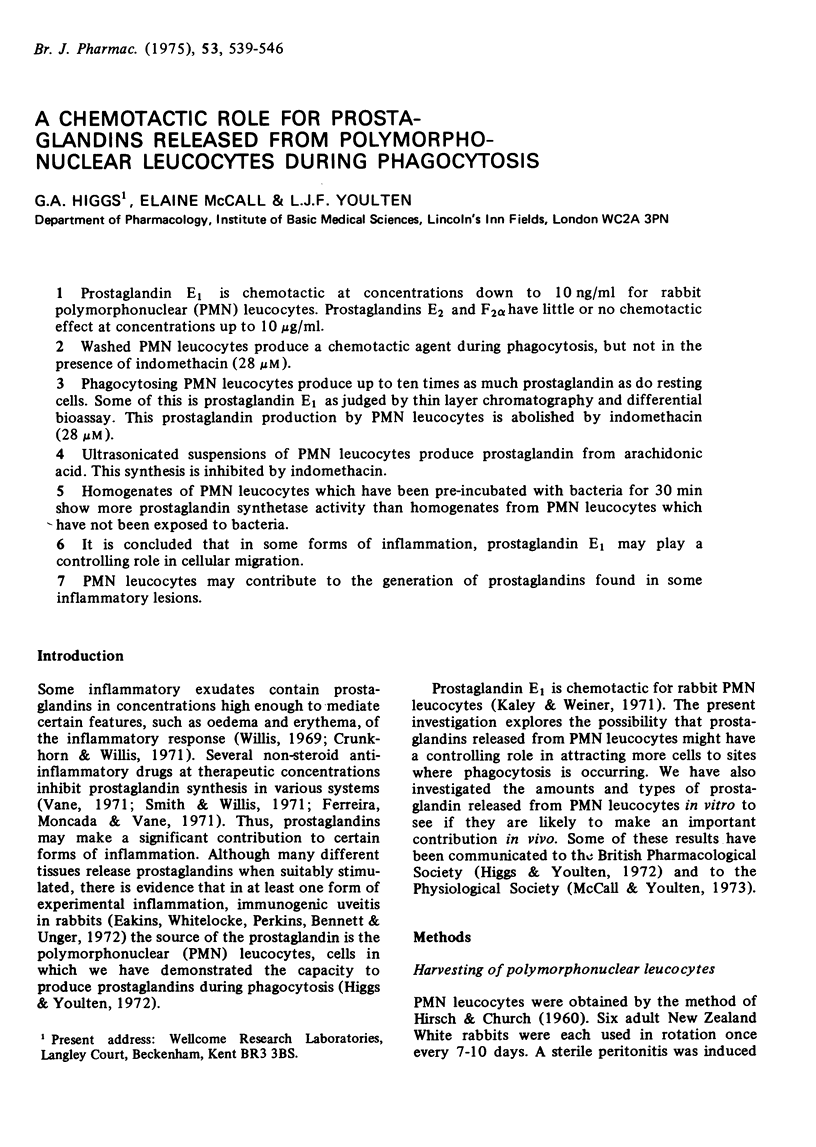
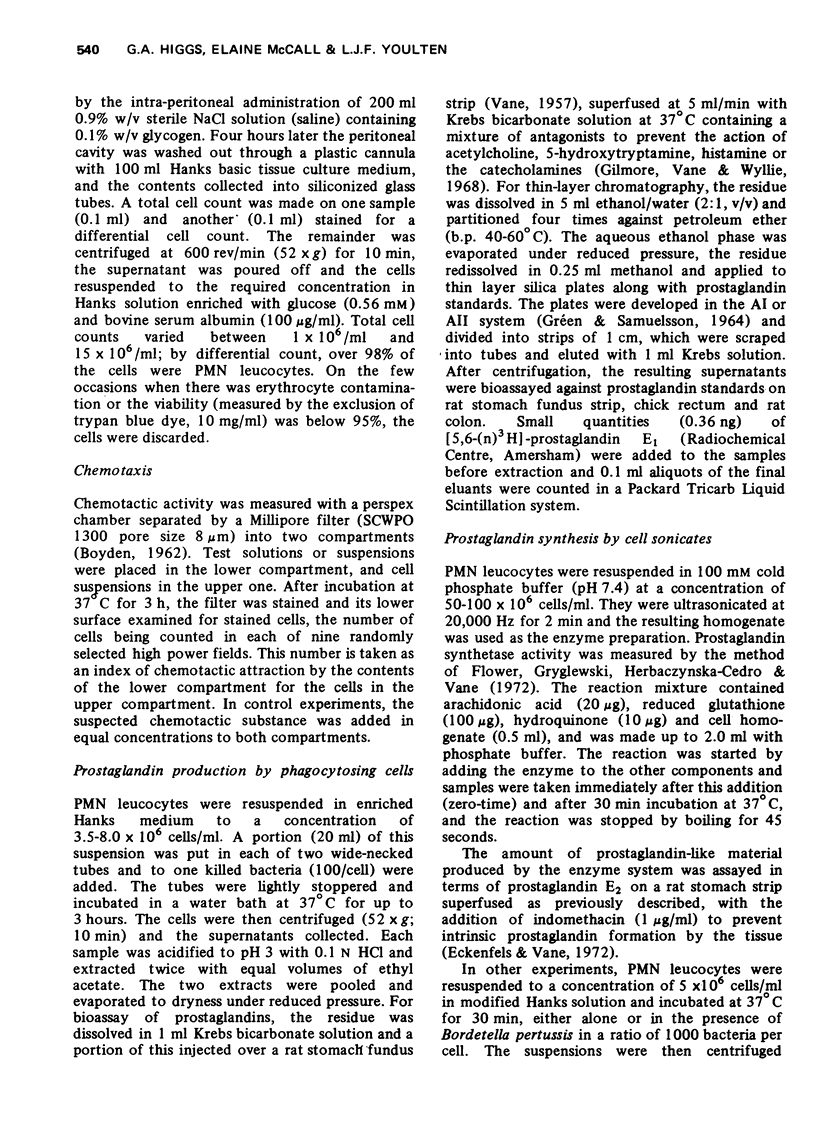
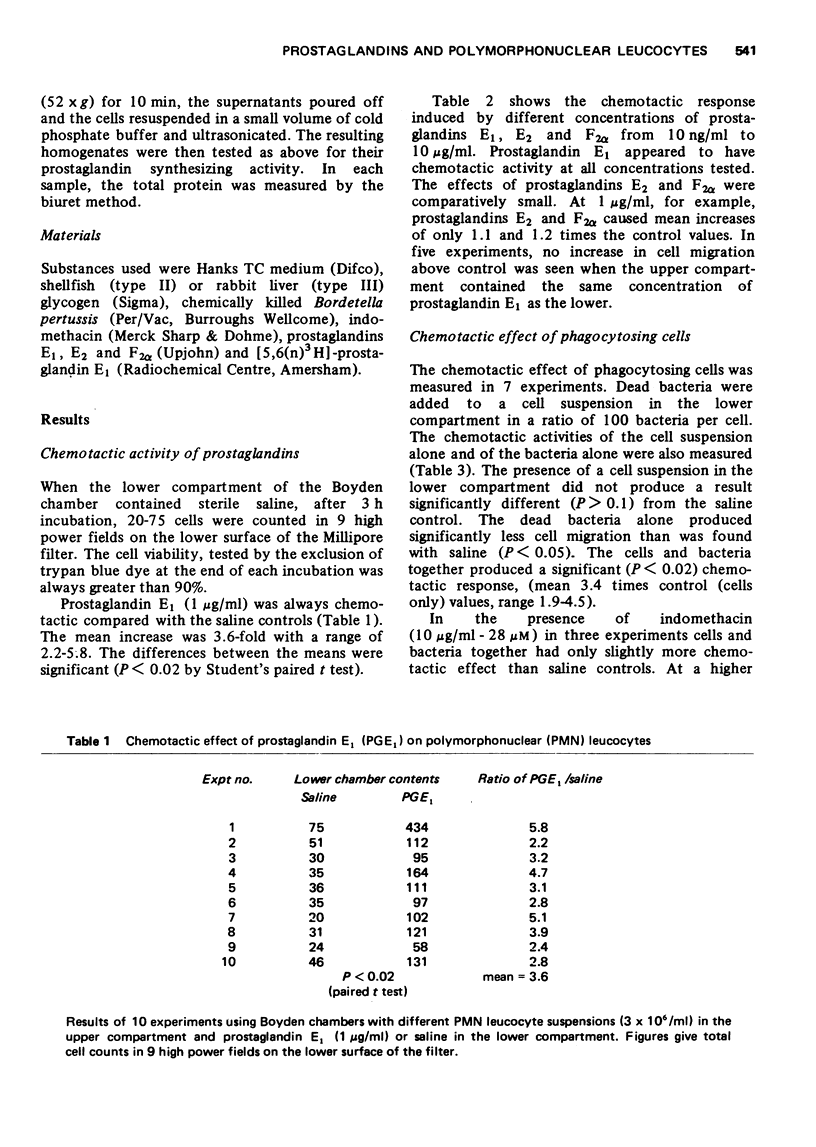
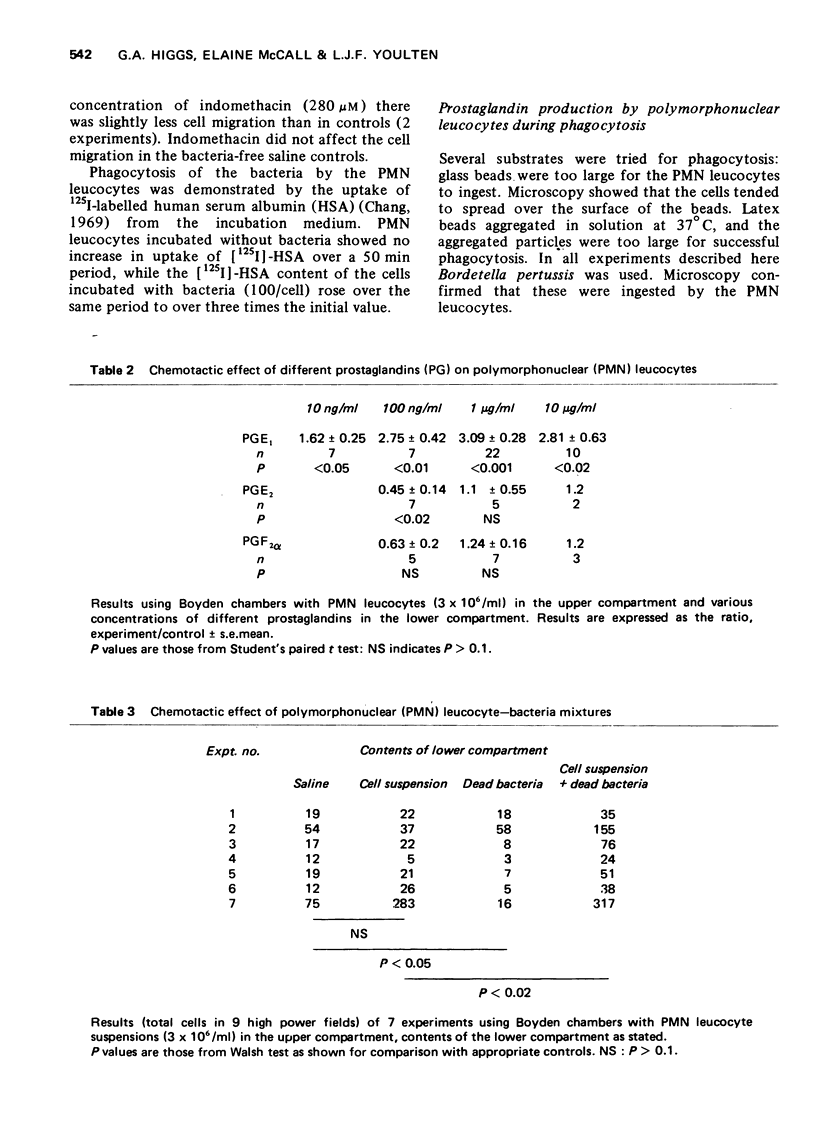
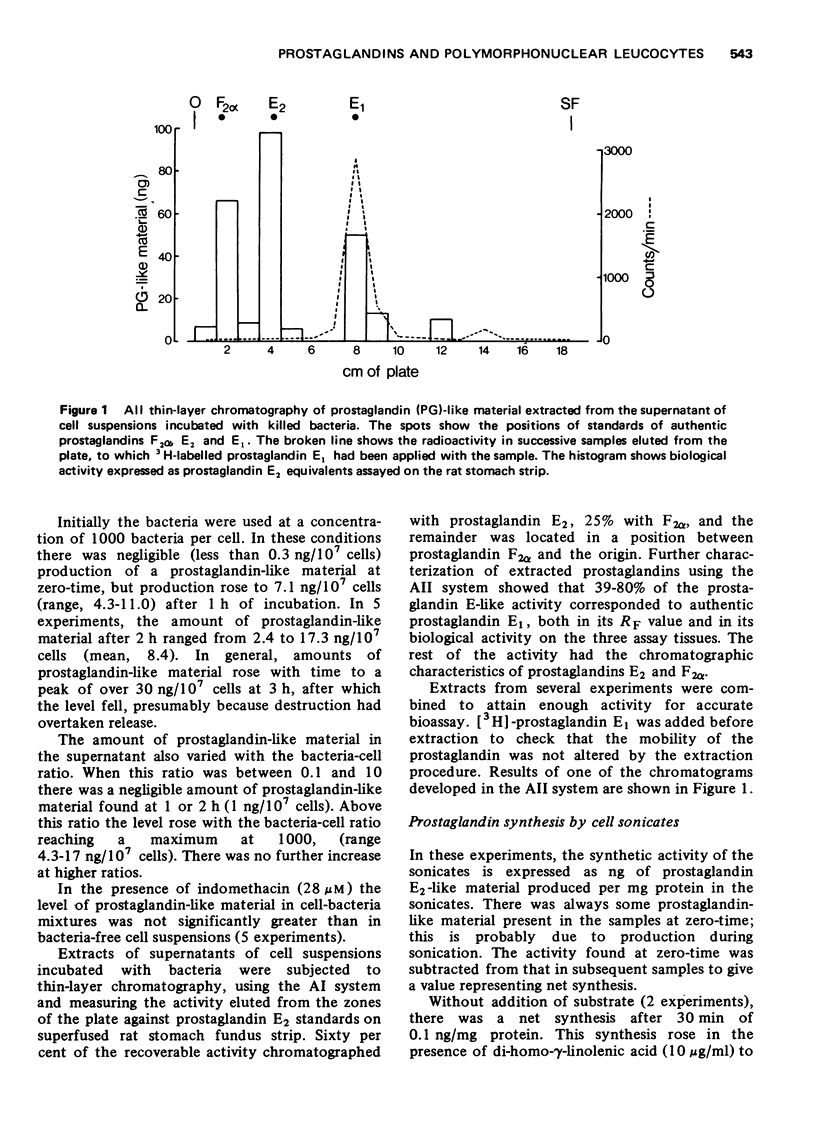
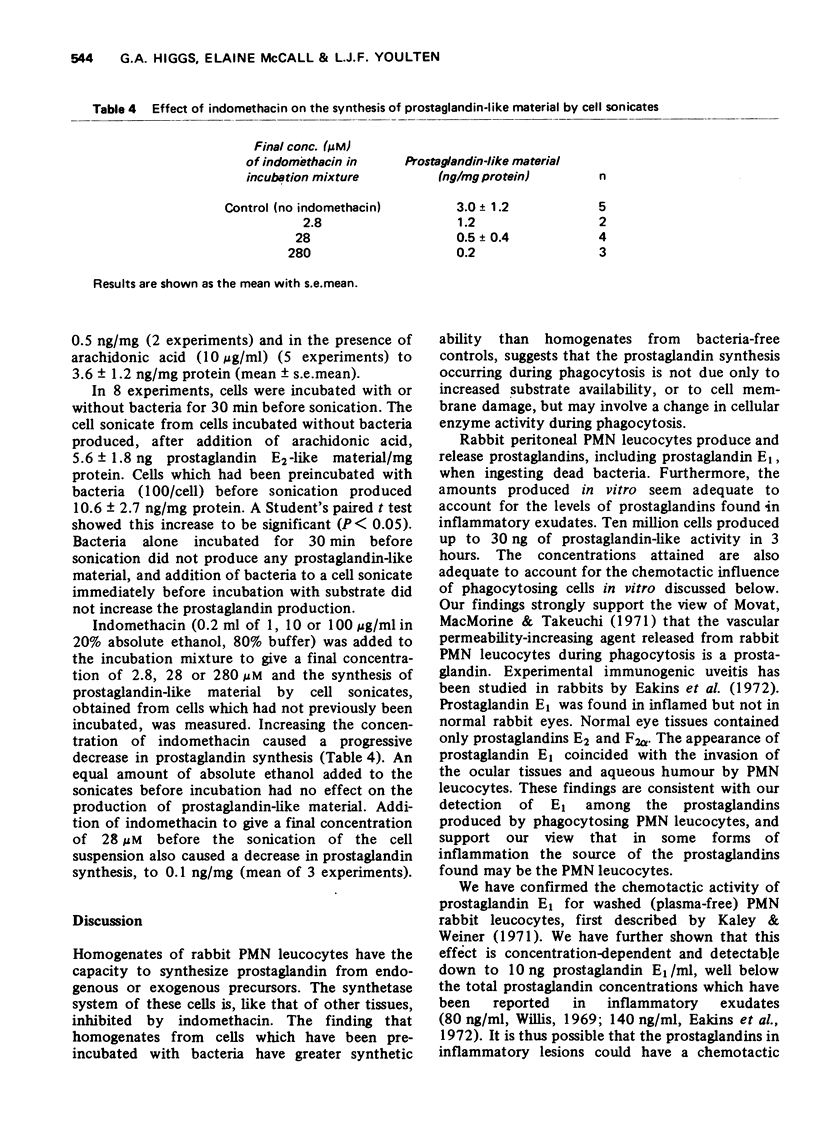
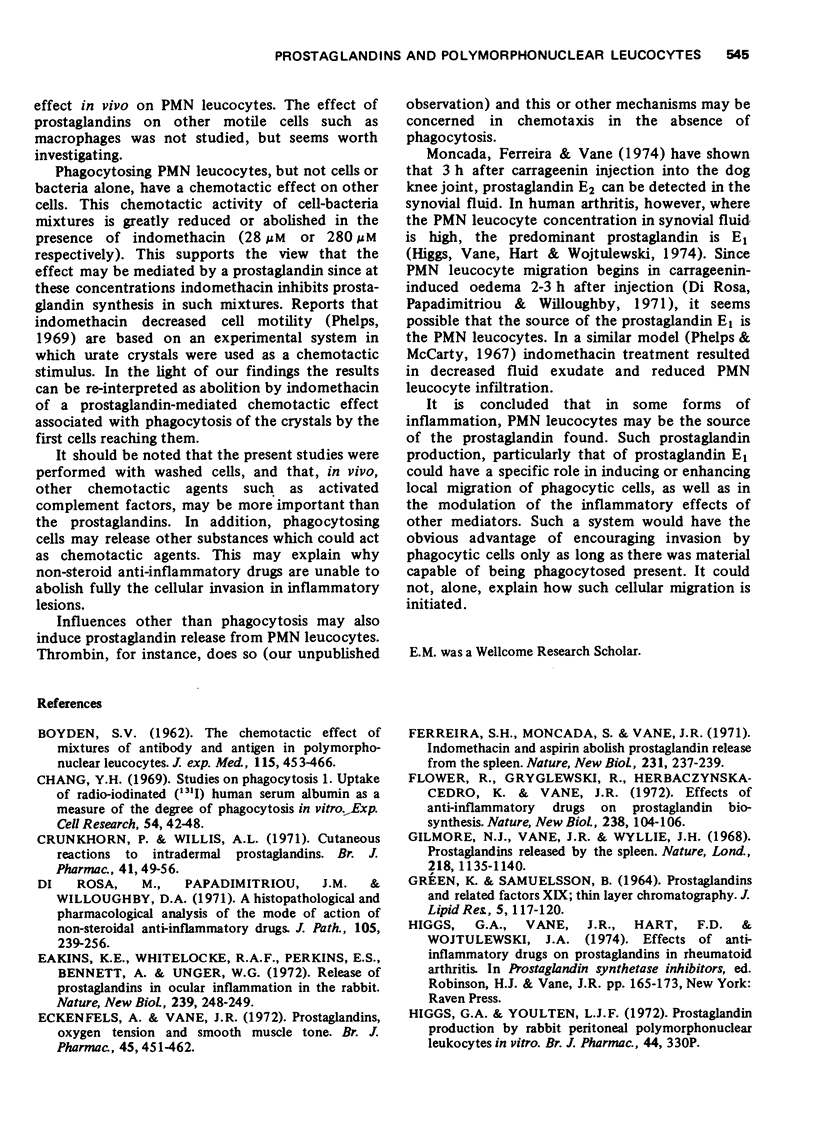
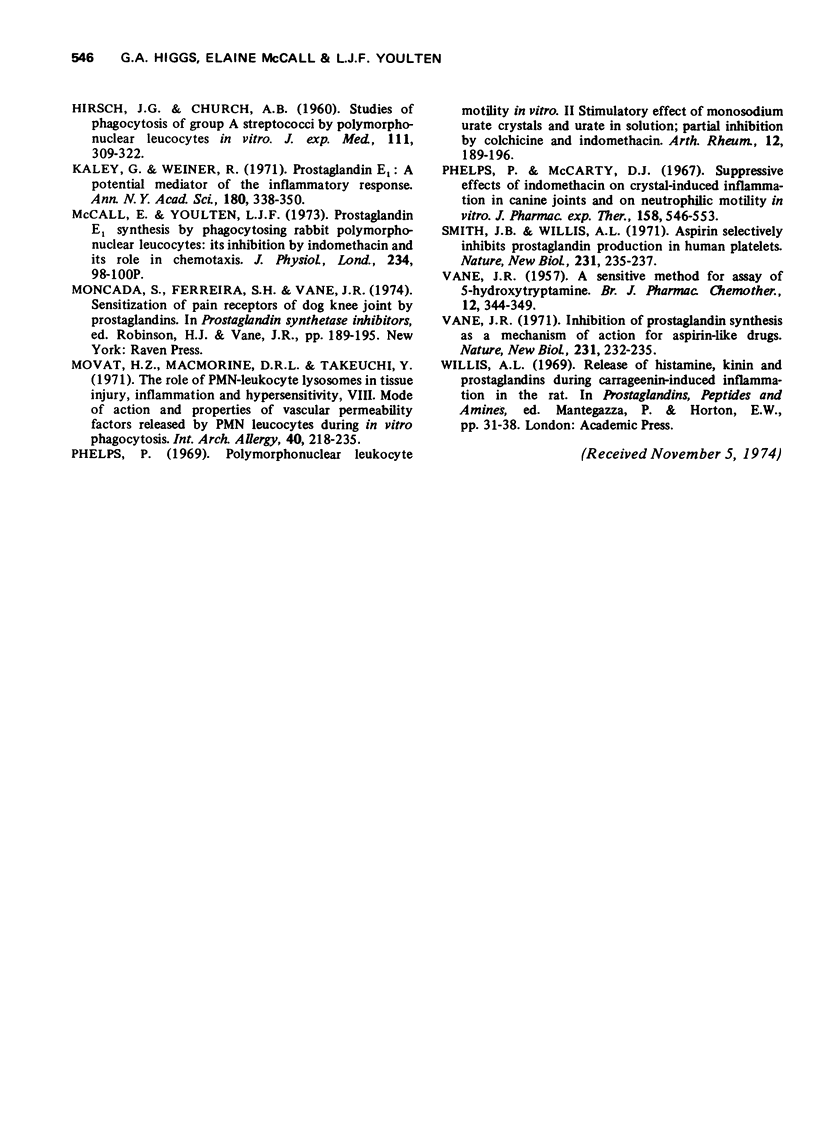
Selected References
These references are in PubMed. This may not be the complete list of references from this article.
- BOYDEN S. The chemotactic effect of mixtures of antibody and antigen on polymorphonuclear leucocytes. J Exp Med. 1962 Mar 1;115:453–466. doi: 10.1084/jem.115.3.453. [DOI] [PMC free article] [PubMed] [Google Scholar]
- Crunkhorn P., Willis A. L. Cutaneous reactions to intradermal prostaglandins. Br J Pharmacol. 1971 Jan;41(1):49–56. doi: 10.1111/j.1476-5381.1971.tb09934.x. [DOI] [PMC free article] [PubMed] [Google Scholar]
- Di Rosa M., Papadimitriou J. M., Willoughby D. A. A histopathological and pharmacological analysis of the mode of action of nonsteroidal anti-inflammatory drugs. J Pathol. 1971 Dec;105(4):239–256. doi: 10.1002/path.1711050403. [DOI] [PubMed] [Google Scholar]
- Eakins K. E., Whitelocke R. A., Perkins E. S., Bennett A., Unger W. G. Release of prostaglandins in ocular inflammation in the rabbit. Nat New Biol. 1972 Oct 25;239(95):248–249. doi: 10.1038/newbio239248a0. [DOI] [PubMed] [Google Scholar]
- Eckenfels A., Vane J. R. Prostaglandins, oxygen tension and smooth muscle tone. Br J Pharmacol. 1972 Jul;45(3):451–462. doi: 10.1111/j.1476-5381.1972.tb08101.x. [DOI] [PMC free article] [PubMed] [Google Scholar]
- Ferreira S. H., Moncada S., Vane J. R. Indomethacin and aspirin abolish prostaglandin release from the spleen. Nat New Biol. 1971 Jun 23;231(25):237–239. doi: 10.1038/newbio231237a0. [DOI] [PubMed] [Google Scholar]
- Flower R., Gryglewski R., Herbaczyńska-Cedro K., Vane J. R. Effects of anti-inflammatory drugs on prostaglandin biosynthesis. Nat New Biol. 1972 Jul 26;238(82):104–106. doi: 10.1038/newbio238104a0. [DOI] [PubMed] [Google Scholar]
- GREEN K., SAMUELSSON B. PROSTAGLANDINS AND RELATED FACTORS: XIX. THIN-LAYER CHROMATOGRAPHY OF PROSTAGLANDINS. J Lipid Res. 1964 Jan;5:117–120. [PubMed] [Google Scholar]
- Gilmore N., Vane J. R., Wyllie J. H. Prostaglandins released by the spleen. Nature. 1968 Jun 22;218(5147):1135–1140. doi: 10.1038/2181135a0. [DOI] [PubMed] [Google Scholar]
- HIRSCH J. G., CHURCH A. B. Studies of phagocytosis of group A streptococci by polymorphonuclear leucocytes in vitro. J Exp Med. 1960 Mar 1;111:309–322. doi: 10.1084/jem.111.3.309. [DOI] [PMC free article] [PubMed] [Google Scholar]
- Higgs G. A., Youlten L. J. Proceedings: Prostaglandin production by rabbit peritoneal polymorphonuclear leukocytes in vitro. Br J Pharmacol. 1972 Feb;44(2):330P–330P. [PMC free article] [PubMed] [Google Scholar]
- Movat H. Z., Macmorine D. R., Takeuchi Y. The role of PMN-leukocyte lysosomes in tissue injury, inflammation and hypersensitivity. 8. Mode of action and properties of vascular permeability factors released by PMN-leukocytes during 'in vitro' phagocytosis. Int Arch Allergy Appl Immunol. 1971;40(2):218–235. doi: 10.1159/000230407. [DOI] [PubMed] [Google Scholar]
- Phelps P., McCarty D. J., Jr Suppressive effects of indomethacin on crystal-induced inflammation in canine joints and on neutrophilic motility in vitro. J Pharmacol Exp Ther. 1967 Dec;158(3):546–553. [PubMed] [Google Scholar]
- Phelps P. Polymorphonuclear leukocyte motility in vitro. II. Stimulatory effect of monosodium urate crystals and urate in solution; partial inhibition by colchicine and indomethacin. Arthritis Rheum. 1969 Jun;12(3):189–196. doi: 10.1002/art.1780120305. [DOI] [PubMed] [Google Scholar]
- Smith J. B., Willis A. L. Aspirin selectively inhibits prostaglandin production in human platelets. Nat New Biol. 1971 Jun 23;231(25):235–237. doi: 10.1038/newbio231235a0. [DOI] [PubMed] [Google Scholar]
- VANE J. R. A sensitive method for the assay of 5-hydroxytryptamine. Br J Pharmacol Chemother. 1957 Sep;12(3):344–349. doi: 10.1111/j.1476-5381.1957.tb00146.x. [DOI] [PMC free article] [PubMed] [Google Scholar]
- Vane J. R. Inhibition of prostaglandin synthesis as a mechanism of action for aspirin-like drugs. Nat New Biol. 1971 Jun 23;231(25):232–235. doi: 10.1038/newbio231232a0. [DOI] [PubMed] [Google Scholar]


